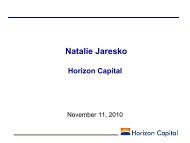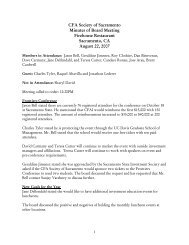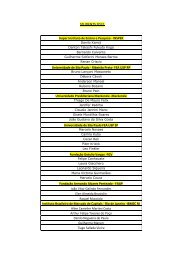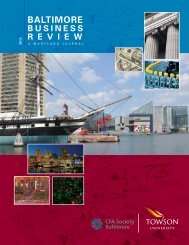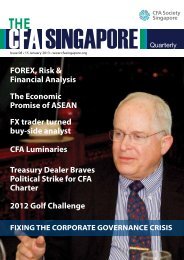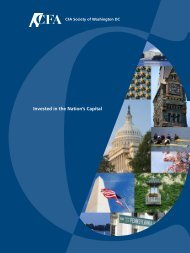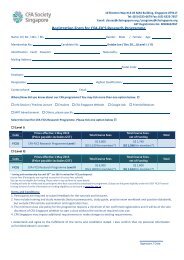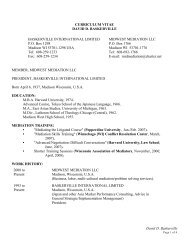newsletter - local CFA Societies
newsletter - local CFA Societies
newsletter - local CFA Societies
Create successful ePaper yourself
Turn your PDF publications into a flip-book with our unique Google optimized e-Paper software.
8NewsletterJune 2008<strong>CFA</strong> Conference FeaturesThe Impact of the Highly Improbable:Randomness and Black Swan BlindnessVicky Ng, <strong>CFA</strong>Over the past 12 months a number ofevents have rocked the financial markets,and how many of us can honestly say thatwe clearly anticipated such incidents or theirseverity? Speaking at the <strong>CFA</strong> Institute AnnualConference in Vancouver on May 12, NassimNicholas Taleb explained why extreme eventsare hard to predict and why these eventsoften have catastrophic impacts. Currently avisiting professor at London Business Schooland formerly dean’s professor in the sciencesof uncertainty at the University of Massachusetts,Professor Taleb is the author of Fooledby Randomness and more recently The BlackSwan: The Impact of the Highly Improbable,two highly regarded books that discuss, oftenthrough anecdote, Taleb’s thoughts on howuncertainty works.such theory is valid only in situations of “mildrandomness”, a world he calls Mediocristan.For example, adding one additional datapoint to a reasonably large sample set of humanheights will probably not greatly changethe distributive properties of the set becauseextreme human heights are not that far fromthe mean. In contrast, adding the annualincome of the world’s richest person to arandom sample set of the incomes of 10,000people would change the sample distributionconsiderably. In other words, in some casesa small number of occurrences can accountfor a large proportion of the total outcome.Another example is that there are about267,000 drugs available on the market, butonly 5% of all drugs account for most of theprofits of pharmaceutical companies. TalebNassim Nicholas TalebIn his presentation, Taleb explained that thecentral problem concerning extreme eventsis that the smaller an event’s probability, thelarger our sample set must be to reliablyestimate that probability, and as the probabilitybecomes smaller the more consequentialthe impact of any error in estimating it willbe on the magnitude of the actual outcome.Investors and others in the prediction businesshave to be conscious not only of theuncertain probability of extreme events, butalso the uncertain magnitude, good or bad,of these events. How, he asked, do analystsjustify labelling something a 1-in-10,000-yearevent when their sample sets cannot covernearly so long a time period? His answer:purely from theory.Mediocristan vs. ExtremistanModern portfolio management often usesstatistical theory based on the Gaussiandistribution (the normal distribution) toforecast event probabilities. Taleb believes“I shiver at the thought that something fails.”provided further examples, pointing out thatTo illustrate the difficulty in more worldlytail distributions dominate the likelihood ofterms, Taleb compared the characteristicssocial and economic events. These situationsof government change in Italy and in Saudibelong to another world, one that TalebArabia: the Italian government changes frequentlyand somewhat unpredictably (highcalls Extremistan. He warns that there is noreliable structure in the probability distributionsof Extremistan.volatility), but each change has relatively littleimpact; the Saudi government changes verylittle (low volatility), but a change in governmentcould have a severe impact in manyTaleb believes that statistics and probabilityestimates are irrelevant in forecastingways (consider the 1979 revolution in Iran).extreme events and our world is shaped byPrognosticators also suffer from the fallacy ofthe dynamics of Extremistan. Although mostsingle event probability. Events in Extremistanpeople rely on past experience (i.e. data fromdo not follow a typical pattern. One mightprevious periods) to forecast the future, pastsuccessfully predict the occurrence of anextreme probability distributions – generallyreferred to as tail distributions – areevent yet be totally wrong about the formthat the event actually takes. An examplenot indicative of future extreme probabilityof this was the confidence of many knowldistributions:previous outliers do not predictfuture outliers.Continued on next page.





